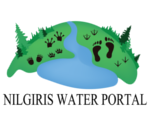The Objectives of the study was to –
– Survey and mapping of crucial wetland habitats in the hill district of the Nilgiris, Tamil Nadu, India.
– Assess the dependence of stakeholders upon wetlands.
– Develop local wetland conservation and management plans
– Initiate dialogue and advocacy with the government on declaring wetlands as important conservation areas.
Methods
The methodology was devised based on a two stage process, described below –
Stage I
The first stage of the project was concerned with collection of data from selected wetlands in the Nilgiris. The activities involved mapping, inventorying flora and fauna and assessing dependence of human communities on wetlands.
– Selection of wetlands was based on previous field visits and indigenous knowledge. Based on this information, these wetlands were categorized as:
– Wilderness – Protected regions with no human activity or presence.
– Rural – Situated far away from urban centres yet providing multi-uses to habitations and settlements.
– Urban – Located within town limits, close to population concentrations with multiple users and stakeholders.
– 4 teams were allotted 10 wetlands each with a common botanist for each team.
Questionnaire prepared – Physical, Biological parameters & threat assessment. Physical parameters like topography, area, slope, ph of water, number of inflows, number of outflows, water quality, flow rates etc. were measured. Biological parameters on the water quality were designed. These maps are not to scale but provide information about the landscape.
In each wetland, the activities undertaken were:
– Transect walk assessing the wetland habitat using a hand held Global Positioning System Unit (GPS unit).
– Observations of land type, water flows, vegetation, convergence of streams and source of springs.
– Measuring flow of water with an average of 5 readings in a one liter bottle. If this method was not found suitable, a piece of wood was set afloat for a given distance and time taken to cover this distance was measured.
– PH measurements with a digital pH meter at 3 places: inflow, outflow and centre of the wetland.
– Random checks to measure depth of water.
– Collection of water sample for testing of various water parameters
– Drawing a sketch of the wetland to understand the landscape.
– Inventory of birds, water insects, insects, and wetland plants, domestic and wild animals observed.
Stage II
The second stage involved consolidation of data on wetlands. Wetlands have been classified in different categories as common property resources – in rural and urban areas and in private and protected areas (Table III). In these categories, a threat assessment was made that identified specific, local issues pertaining to the wetlands. Out of the 38 wetlands – 5 representative wetlands were selected for a local management plan in consultation with stakeholders. Additionally, the other activities in stage II of the project involved –
– Awareness generation initiatives – wetland walk, posters were prepared on Wetlands of Nilgiris & People, Wetland Birds, Wetlands Biodiversity and Nilgiris Wetlands Flora.
– Restoration activity – Model nursery

